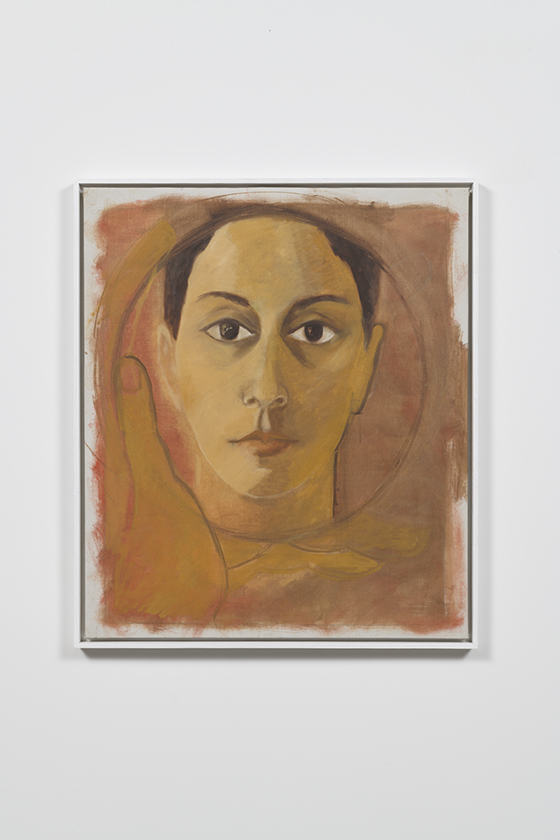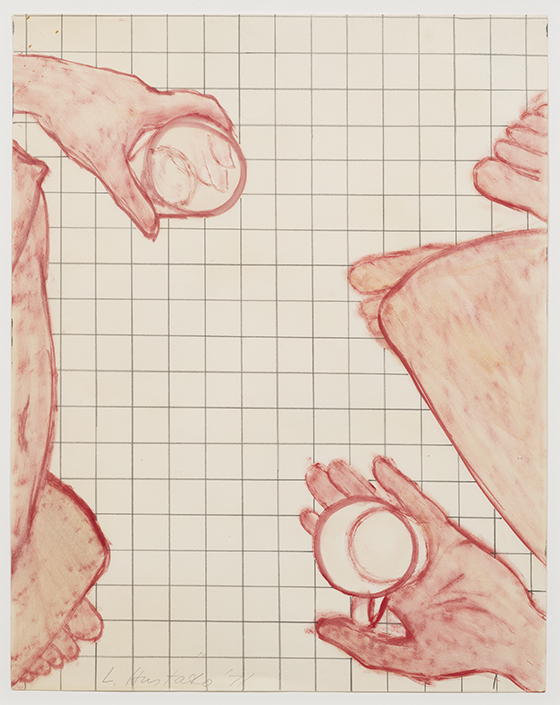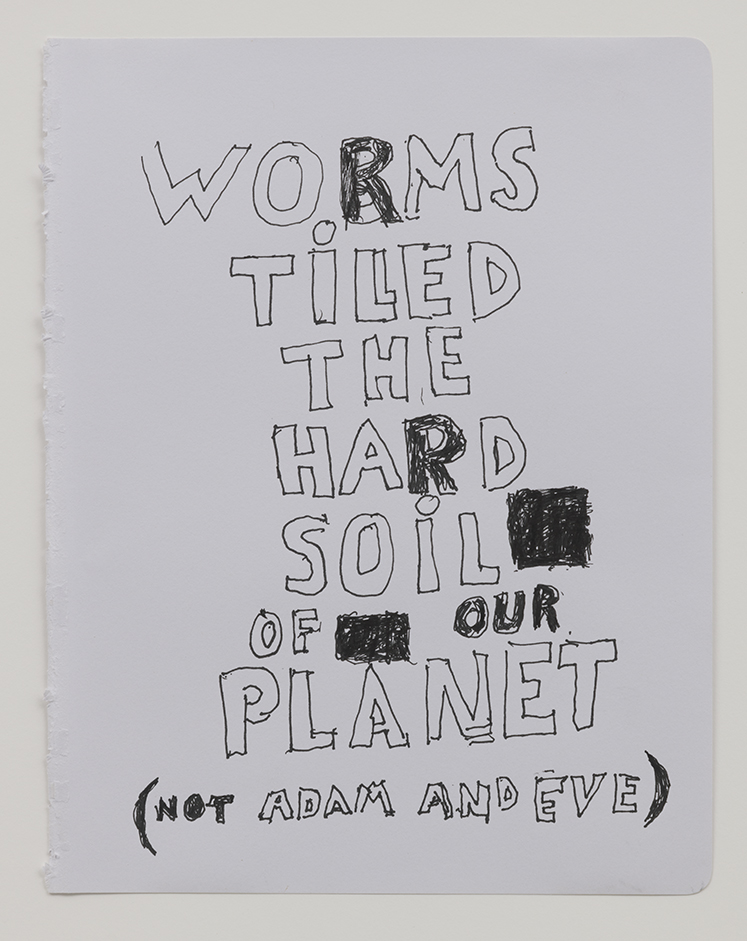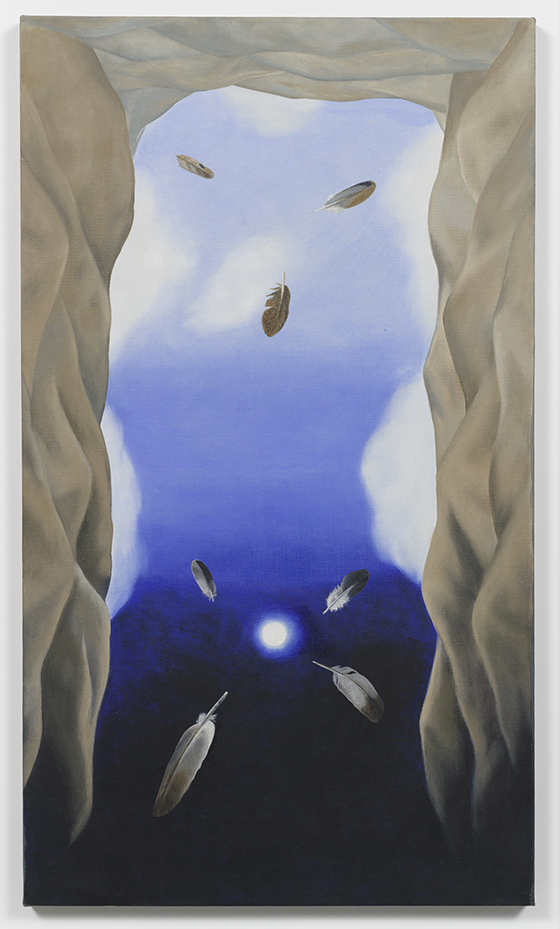Self Portraits Across Time

Untitled (Self Portrait), c. 1968
Oil on linen
Courtesy of the artist and Hauser & Wirth © Luchita Hurtado
Photo: Jeff McLane/Hauser & Wirth
Untitled, 1970
Hurtado made this print at the invitation of her friend June Wayne, founder of Tamarind Lithography Workshop. Wayne famously questioned Hurtado about the use of her married name during the first meeting of the Los Angeles Council of Women Artists in 1971. As the story goes, Hurtado introduced herself to the group as “Luchita Mullican.” Only when challenged, “Luchita what?” by Wayne, did she proudly answer, “Luchita Hurtado.” In a recent interview with Hans Ulrich Obrist, Hurtado recounted, “It became very important in my life to remember that name.”
Self Portraits – Looking Down

Untitled, 1971
Oil and graphite on paper
Courtesy of the artist and Hauser © Luchita Hurtado
Photo: Jeff McLane/Hauser & Wirth
Mascara, 1975
In this “sky skin” painting, Hurtado composed the shape of the sky to resemble a stretched animal skin. The palette of Mascara and related canvases were no doubt informed by the sky and landscape colors of her surroundings; she documented several of her paintings against the backdrop of Taos, New Mexico, where one can see the same combination of blue skies and earth tones as in the canvases themselves.
Environmental Activism

Untitled, 2018
Acrylic on canvas
Courtesy of the artist and Hauser & Wirth © Luchita Hurtado
Photo: Jeff McLane/Hauser & Wirth
Feathers

The Umbilical Cord of the Earth is the Moon, 1977
Oil on canvas
Courtesy of the artist and Hauser & Wirth © Luchita Hurtado
Photo: Jeff McLane/Hauser & Wirth
Credit Line
This exhibition was organized by the Serpentine Galleries (London), in association with the Los Angeles County Museum of Art.
Generous support is provided by Elizabeth, Matthew, and Theodore Karatz and their families in honor of their mother, Janet Dreisen Rappaport. In-kind support is provided by Hauser & Wirth.